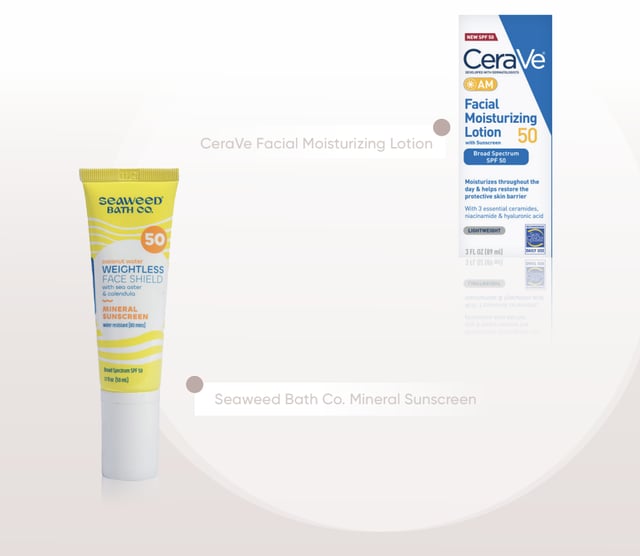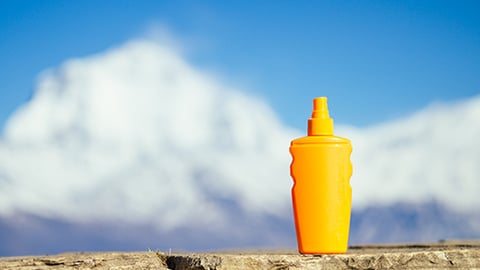Here comes the sun
Consumers no longer slather on baby oil and bake in the sun. Aging baby boomers, regretting they eschewed sun protection in their youth, turn to SPF to stave off the signs of aging. More educated younger consumers learned at an early age to slather up.
Even with greater awareness of the benefits of SPF, skin cancer remains the most common cancer in America. One in five Americans will develop skin cancer by age 70. And unlike most forms of the disease, skin cancer risks can be lessened with sunscreens, according to the Centers for Disease Control and Prevention.
Mass marketers control the lion’s share of sun protection sales. While it is a smaller category than mass, prestige sunscreen sales rose 17% to $506.9 million in 2023, according to Circana.
The mass market channel produced $1.7 billion in sales but only grew 2% over 2022. To maintain their dominance and grow the category, they must deal with two challenges—misinformation filtering into the market on social sites and inroads from specialty and direct-to-market competitors.
[Read more: Kenvue, Walgreens and MRF come together on sun safety initiative]
Education is mission-critical for mass doors. Not only are pockets of the population still not tuned into the danger of the sun—especially Gen X men—but TikTok and other sites pass on false information. The hashtag #toxicsunscreen has been viewed by billions of people.
A just-released study by the American Academy of Dermatology showed that 28% of 18-to-26-year-olds said they don’t believe suntans cause skin cancer.
Dermatologists are taking to TikTok to clear the air. “The accessibility of dermatologists on social media has led to the debunking of many sun care myths, such as the difference in need for SPF for individuals with darker skin tones compared to fairer skin tones, or that sunscreen is not necessary on cloudy days,” said Jasteena Gill.
Derms noted that the death of Jimmy Buffet from skin cancer raised awareness, but there is much more to do.
[Read more: La Roche-Posay launches immersive ‘Shades’ experience in New York]
The mass industry is implementing strategies to keep sales bright and consumers safe. Ulta Beauty features sun care products as part of its monthly “Skinfatuation” skincare items of the month. The retailer explains “why we love” each item and suggests who should use it.
What Are Sunscreen Consumers Searching?
Spate search data shows what consumers are looking for in sun products. Mineral sunscreens were the number one searched term for the year ended March 2024 compared to the year before. Water-based sunscreen searches soared more than 200%, Spate said. Interest in chemical sunscreens is also escalating.
The top brands searched alongside mineral sunscreen by volume in the United States include Neutrogena, La Roche-Posay and Sun Bum. Neutrogena and La Roche-Posay were also searched regarding chemical sunscreen.
Mineral sunscreens typically include zinc oxide and titanium dioxide, which help reflect and scatter harmful rays. Chemical sunscreens partially absorb into skin to help prevent UV damage through a chemical reaction. A benefit is that chemical sunscreens usually don’t leave behind a white residue.
According to the company, CeraVe Hydrating Sheer Sunscreen, launched in 2022, was the first brand to have the blend.
CVS helps customers find brands by SPF on its website and in stores. The Skin Care Centers sport diagnostic tools to show skin damage and recommend products. The retailer has also eliminated the sale of products with SPF below 15.
Walgreens’ website offers a question-and-answer format about sunscreens. In addition, beauty consultants on the sales floor are trained in sun care. The chain has a Dermatologist on Call feature for severe issues.
On the brand side, CeraVe launched a campaign called “The One Under the Sun” to promote wearing moisturizers with SPF. Modeled on a RomCom, the spot features a “matchmaker” dermatologist who helps a woman find “the one”—in this case, CeraVe’s Facial Moisturizing SPF.
CeraVe also sponsors the Sun Hero program alongside La Roche-Posay. The educational program, founded by board-certified dermatologist Dr. Amy Brodsky, provides healthcare professionals with a curriculum and resources to teach children about the importance of adopting sun-safe habits at an early age.
[Read more: New Study: Consumers on the hunt for reef-friendly, anti-aging-focused sun care products]
The latest CeraVe launches include one new SPF formula, CeraVe AM Facial Moisturizing Lotion SPF 50. The lotion features a hybrid formula with mineral and chemical filters that provide broad-spectrum protection, while its hydrating ingredients and ceramides help restore the skin barrier.
The Seaweed Bath Co. addresses interest in mineral formulas, “better for you” formulas and multifunctional products.
“We saw a white space in the market to launch products that are high-quality, reef-safe ingredients that work for all skin types,” said Allison Grossman, Seaweed Bath’s co-founder.
The brand recently expanded its sun lineup with a Clear Mineral Lip Shine SPF 20, a Hydrating Serum Stick SPF 50, a Super Sheer Face Serum and an Invisible Mineral SPF sunscreen.
Australia’s Naked Sundays is making waves in the United States with its makeup primers, serums and SPF-containing facial sprays. The brand is currently sold at Target.
Black Girl sunscreen is formulated for melanin-rich skin and has gained space in CVS, Target, Walmart, Walgreens, H-E-B, Ulta Beauty and Amazon. Shontay Lundy founded the brand in 2016 when she was frustrated with the white residue most brands left on people of color.
According to Circana, the top five mass market brands include Neutrogena, Banana Boat, Coppertone, private label and Sun Bum.





